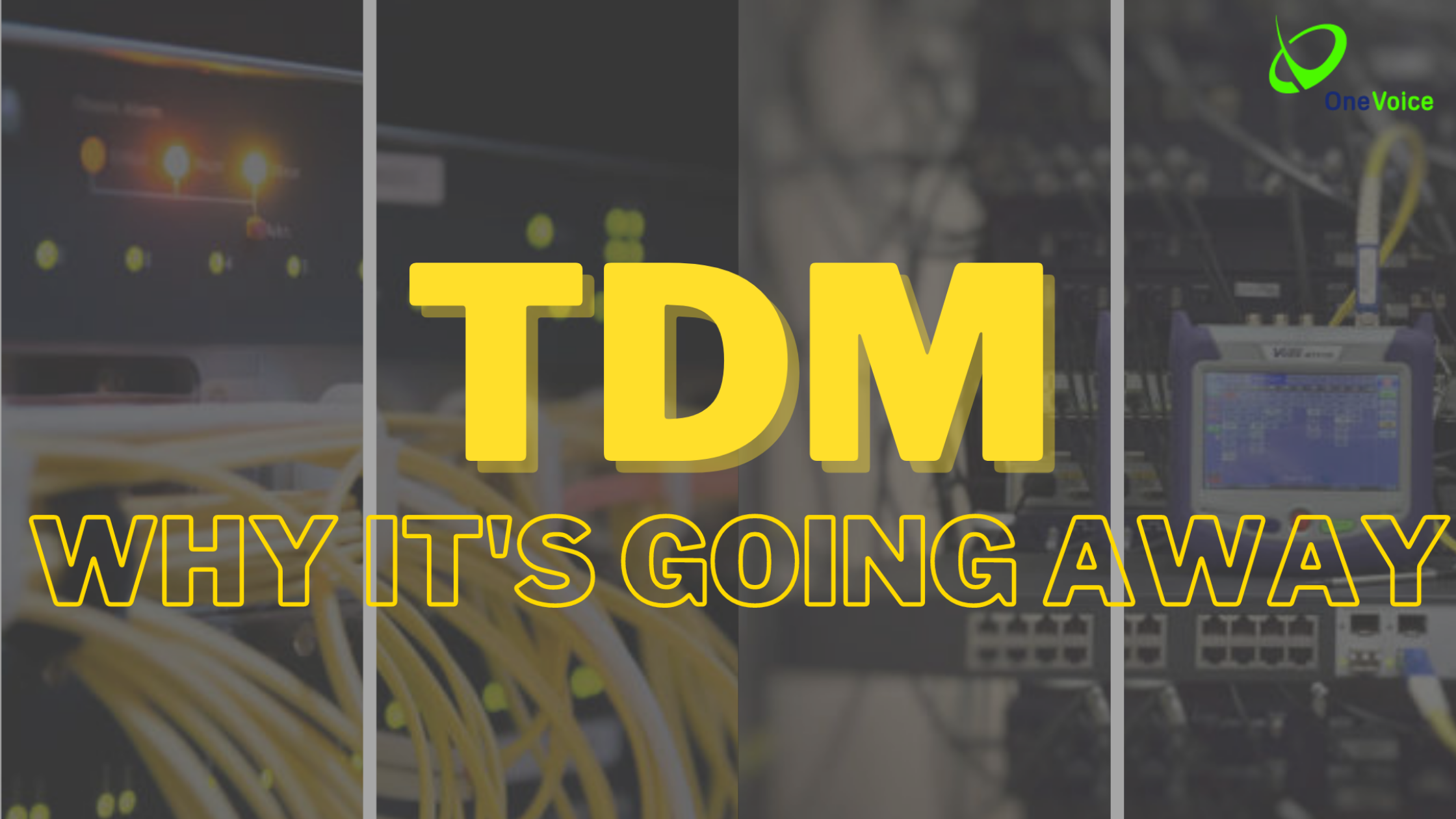TDM- Why It’s Going Away

Time Division Multiplexing (TDM), also known as Legacy TDM is a “method of transmitting and receiving independent signals over a common signal path.” TDM is a traditional method of achieving connectivity through physical circuits. It was initially developed in the 1870’s for telegraphy purposes, so this technology has been around the block a few times. TDM is primarily divided into two different categories Synchronous TDM and FDM or Frequency Division Multiplexing. TDM works not only with analog signals but also digital signals, whereas FDM’s works purely with analog signals. There are many other pros and cons for each technology but nonetheless, they both are outdated for the current technology that businesses need.
What are TDM Technologies?
One of the largest technologies that is a part of the TDM are PRI’s or Primary Rate Interface. PRI’s in simple terms is a copper-based voice solution that is only able to carry 23 channels. This means if you are in need of more than 23 channels, you or your business will need to purchase and install additional lines. It is a synchronous TDM technology versus a FDM technology as discussed earlier, but PRI is still difficult and expensive to maintain. Although none of these technologies involve using a broadband or dedicated connection as many newer technologies do, the cons outweigh the pros in this case.
Why is it going away?
Like any other industry, product, or service, there is always something new and there are improvements being made. This has been a long time coming, but many carriers, specifically larger ones, are participating in the dismantling of TDM related products and services. Voice services are now moving in the direction of internet-based connections instead of through a cable or wiring. The ability of voice services to be connected through the internet will/does allow employees to be anywhere and take the calls they need to.
What is a solution?
There are many alternatives to the outdated TDM networks and OneVoice can help provide those to you or your business.
- Dynamic Integrated Services- Also known as Dynamic IP, this is the most similar to PRI’s. It allows for a single circuit for both internet and voice. The reason this works is because as the volume changes voice and data will alternate for whichever has the highest volume at that given time. It uses VoIP technology to prioritize and allocate traffic to create a seamless experience for you and your employees.
- SIP Trunking: SIP Trunking is a great alternative to TDM or PRI technologies simply because of the cost. When using SIP Trunking, you or your business only pay for what you need. In simple terms, a SIP trunk is a virtual version of a PRI (or analog phone). It still uses a PBX, similar to a PRI circuit, but you can connect as many or few channels you would like. As discussed earlier, PRI’s provide 23 channels at least, so there is no room to customize channels to your business.
- Hosted VoIP: Hosted VoIP (Voice Over IP) is also very similar to SIP Trunking but calls are taken instead over an internet connection. Hosted VoIP is one of the newer technologies. VoIP is a cost-effective solution with a variety of features for your business. And the only major equipment that is needed is a stable internet connection. This is the most popular newer option for businesses.
- PRI Replacement Solution: OneVoice’s custom PRI replacement solution that’s both cost-effective and can use your existing hardware, cutting down on overhead costs.
While TDM was once a prominent technology, it is now being surpassed by other, more advanced and flexible technologies. Like many other products, industries, and services, there are new, more reliable technologies available for your business.
Don’t get left behind, update your voice services today with OneVoice.
Make sure to share this blog and follow us on all of socials @onevoicetech for even more content.
Call Us @ 877.363.3133
